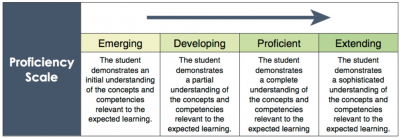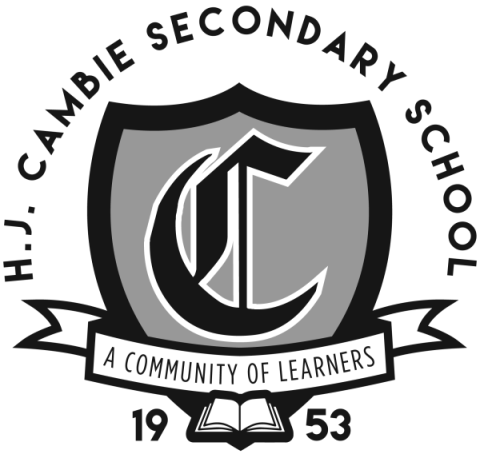Raising the Bar - Changing How We Measure Learning
At Cambie, we have been on a journey for the past 5 years to reimagine how we think about and measure growth and learning. In the 2020-2021 school year, we have certainly hit a tipping point in this journey, with the majority of our students in grade 8 and 9 experiencing a completely reimagined model for assessment.
A traditional approach to assessment involve teachers assigning numerical marks to every test, quiz, and assignment and then averaging these numbers at the end of the term to produce a grade. Many of us are very familiar with this approach as it has been in place as the standard for decades. One of the greatest drawbacks of this approach is that it does not take growth over time into consideration. For example, a student who is initially unsuccessful in mastering a skill, but eventually, through hard work, is able to successfully demonstrate this skill would only ever receive an average of the two marks. This would cause a situation where the final assessment information does not accurately reflect what the student is able to do at the end of the course because growth is not taken into account.
To give a more concrete example of the shortcomings of a traditional approach, consider a driver's road test. Some new drivers are unsuccessful on their first road test attempt. Those who are unsuccessful on their first attempt are given information on what skills they need to further develop and are sent away to learn and practice before scheduling a new road test. When this driver is successful at their second road test, their new evaluation completely replaces their original evaluation. It is never a consideration that these two scores be averaged together!
In the classroom, we have been learning about how we can use this same growth-focused approach to describe student achievement. Many Cambie teachers have worked hard to shift our assessment of learning from a traditional approach to one that is more in line with the road test example. These teachers have developed documents called Learning Maps that describe the continuum of learning in a subject area across four levels of proficiency. These proficiency levels have been used in place of traditional numeric scores, percentages, and letter grades.

This school year, twenty-three teachers at Cambie have used this approach in one or more of their classes, predominently at the grade 8 and 9 level. In these classes, students have received a rating on the proficiency scale instead of a traditional letter grade. Approximately 70% of final marks on our grade 8 and 9 report cards reflect this innovative approach to assessment. The results have been quite remarkable and reflect the strong growth demonstrated by our students. This year, achievement at the grade 8 and 9 level has been strong in classes where teachers have shifted their assessment practices to this modern approach:
| Proficiency Level |
2020-2021 |
|---|---|
| Extending | 37% |
| Proficient | 40% |
| Developing | 19% |
| Emerging | 4% |
We are quite proud of the level of achievement and engagement demonstrated by our students this year. This shift in our thinking of assessment has led students to be far more engaged in their learning and far more focused on their growth and mastery of skills. Our students are truly raising the bar! As we look to the future, we will be considering how we can expand this approach to the remaining grade 8 and 9 classrooms as well as continuing to experiment with the implementation of this approach in the graduation program years.
Background
For more information about our journey, please click here see a video of a presentation given by Cambie Administrators to the Richmond Board of Education in February 2020.
